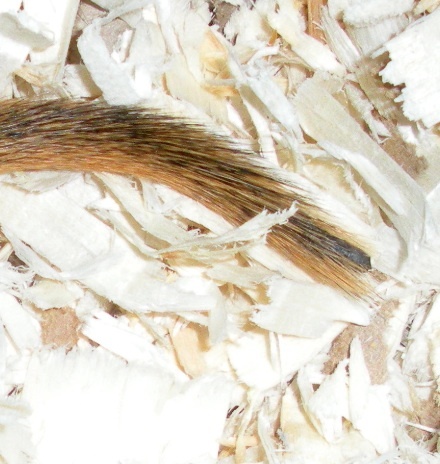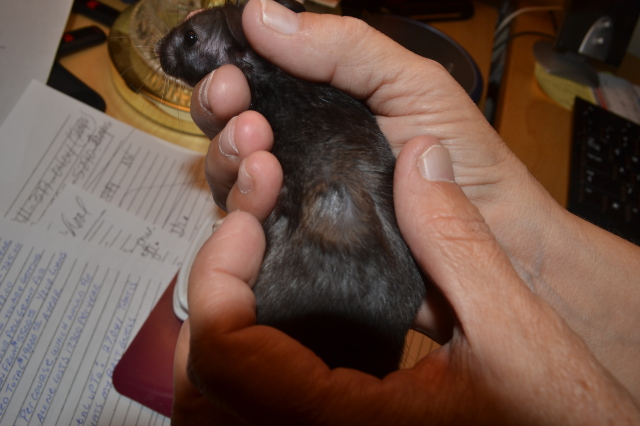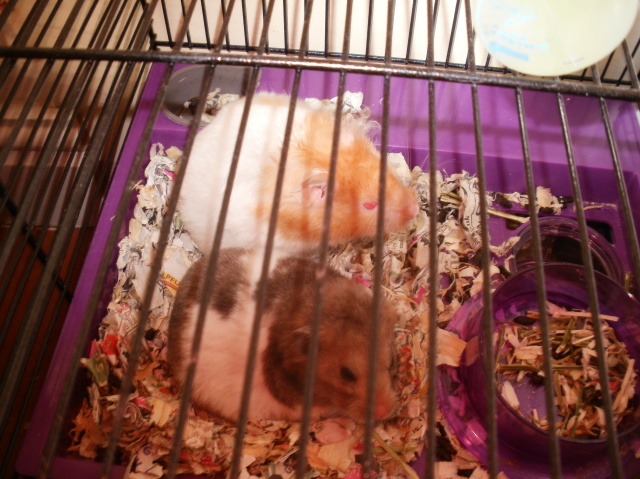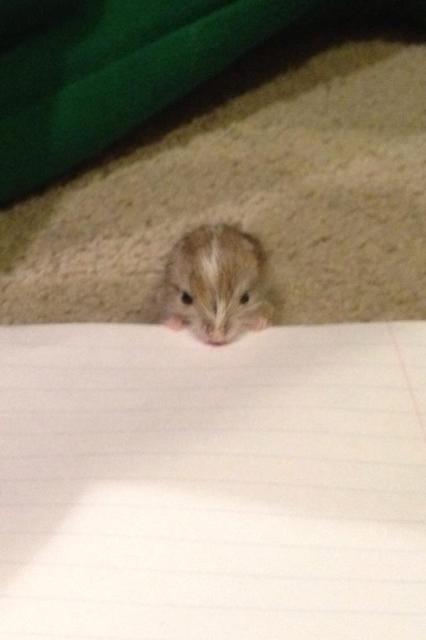QuestionhamsterHow many hamsters can you keep in one cage? If you can keep more
than
one in a cage, do they get along? if they do get along, do you need a big, big
cage to hold them? What do you do if out of nowhere, your hamster becomes
pregnant, and you can't afford the take care of her and her young? Would
hamsters be ok with a new owner if they have been with another loving
owner? Are mother hamsters usually ok with letting their babies go? Do
babies react well to being separated from their mother? Could half grown
hamsters hurt or even kill their mother? How could you make a shy hamster
get use to you? Could you keep the father in the same cage as the mother
and the pups? Could the father hurt the mother and pups?
AnswerHi Allie,
I'll answer your questions in order:
1. "How many hamsters can you keep in one cage?" It depends on what kind of hamster you have. Syrian hamsters (aka "Teddy Bear," "Black Bear," "Golden," and "Fancy" hamsters) are solitary animals, so they *must* be kept one per cage. Having more than one Syrian hamster living in a cage means that they will fight violently, and one of the hamsters will kill the other.
However, if you have Dwarf hamsters (the smaller hamsters - they are usually either grey-and-white or brown-and-white), they can be kept in pairs. Dwarf hamsters are very social, and they appreciate the company of others. They should be kept in same-sex pairs.
Regardless of whether you have one Syrian hamster or 2 Dwarf hamsters, the cage should be at least the size of a 10-gallon aquarium.
2. "What do you do if out of nowhere, your hamster becomes
pregnant, and you can't afford to take care of her and her young?" First, if you have a Syrian hamster, obviously you wouldn't have to worry about this. If you get Dwarf hamsters, make sure that you get either 2 males or 2 females. If by some chance you end up with a male and female Dwarf, and the female becomes pregnant, there aren't that many extra expenses. You will need another cage to place the male in, however, since you don't want any more breeding. Once the female has the babies, she will feed them. Then, when they are 3 weeks old and weaned, they will need their own cage. (The mother is fine with her babies leaving - if you were to keep them in the cage with her, she would try to kick them out. And, the babies will have each other's company for a few weeks, until they are adults, so they adjust well.) Once they are 6 weeks old, then they can be given away. So basically, if you end up with an unwanted pregnancy, your extra expenses would be 2 extra cages.
3. "Could you keep the father in the same cage as the mother and the pups? Could the father hurt the mother and pups?" A male Dwarf hamster would not harm the babies. In fact, he would help take care of them. However, if you don't want any more breedings, you should take him out of the cage before the babies are born.
4. "Would hamsters be ok with a new owner if they have been with another loving owner?" Hamsters adapt well to new people, especially when they're younger. As they get older, it just takes more time for them to adapt to a new parent.
5. "Could half grown hamsters hurt or even kill their mother?" If they're Syrian hamsters, they shouldn't be living together. Dwarf hamsters are social, as I said before, so if you were to leave a female baby in with the mother (which I often encourage people to do), they would most likely get along fine. If there were any problems like that, it would be the mother hurting the baby, not the other way around. (This is a long shot, however.)
6. "How could you make a shy hamster get used to you?" You should be very patient when dealing with a new hamster, as it takes them a while to become tamed. First, when you bring a new hamster home, you shouldn't touch it for 48 hours. This 2-day period will lessen the hamster's stress and allow it to adjust to its new surroundings, complete with new sights, sounds, and smells. When you begin handling your hamster, place a treat, such as a plain Cheerio, in the palm of your hand. Then, place your hand, palm up, in the bottom of the cage. Let the hamster approach your hand, then gently scoop it up with both hands. Sit down while you're handling it; nervous hamsters have a tendency to jump, and if you're sitting on the ground, the hamster is less likely to get injured. Be very gentle with your hamster, and never suddenly grab him. Also, never wake him suddenly - he would probably bite you. Like I said, it will take time, but the hamster would eventually become used to you.
I hope this helps, and if you have any other questions, please feel free to ask :)
Kelly

 Gerbil tail problems
QuestionQUESTION: Hello,
I have a female gerbil that
Gerbil tail problems
QuestionQUESTION: Hello,
I have a female gerbil that
 Help my gerbil!
QuestionMy gerbils tail
QUESTION: Hello,
Help my gerbil!
QuestionMy gerbils tail
QUESTION: Hello,
 Why does my hamster have a dent in his fur? Also does he have a tumour?
Question
This is the "dent" ~~~
Why does my hamster have a dent in his fur? Also does he have a tumour?
Question
This is the "dent" ~~~
 hamster cadge
Question
my hamsters
what should the normal hamster cad
hamster cadge
Question
my hamsters
what should the normal hamster cad
 orphaned gerbil =(
QuestionQUESTION: Hi Sheila,
My daughters English class
orphaned gerbil =(
QuestionQUESTION: Hi Sheila,
My daughters English class